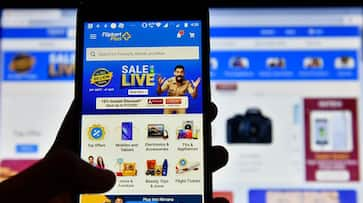Flipkart, India's pioneering e-commerce platform, is a name synonymous with the digital shopping revolution in the country. Founded in 2007 by Sachin Bansal and Binny Bansal (unrelated despite the same surname), Flipkart began as a humble online bookshop and has grown into a multi-billion-dollar giant, influencing how millions of Indians shop. This is the story of how Flipkart navigated the unknown path of Indian e-commerce, overcoming challenges, and setting the stage for its eventual acquisition by Walmart.
The Early Days
In 2007, Sachin and Binny, both alumni of the Indian Institute of Technology (IIT) Delhi, were working at Amazon when they decided to quit and start something of their own. Inspired by Amazon’s model, they launched Flipkart, starting with an initial investment of INR 4,00,000. Their vision was simple: make buying books online straightforward and reliable in India, a country where internet usage was still nascent and online shopping was rare.
The duo started Flipkart in an apartment in Bangalore. In the early days, Sachin and Binny would personally deliver books to customers, using their own money for fuel, while constantly striving to improve the customer experience. This hands-on approach ensured customer satisfaction, laying a strong foundation for Flipkart's success.
Building trust: Cash on Delivery (COD)
One of the game-changing innovations Flipkart introduced was the Cash on Delivery (COD) payment option, which was crucial in gaining customer trust. Given India's low credit card penetration and mistrust of online payments at the time, COD allowed customers to pay for their orders only upon receiving them. This helped overcome the psychological barrier of shopping online and rapidly expanded the customer base.
Expansion beyond books: The diversification era
After establishing itself as a reliable online bookshop, Flipkart began expanding its product categories. It ventured into electronics, home goods, fashion, and more. By 2011, it was offering a wide range of products, becoming India's go-to online marketplace. Flipkart also launched its own logistics arm, Ekart, to ensure faster and more reliable deliveries. During this period, Flipkart’s aggressive marketing campaigns—especially around the **Big Billion Day** sales—drew millions of customers, further cementing its position in the Indian e-commerce landscape.
Growth and Funding
As Flipkart grew, it began attracting significant interest from investors. Between 2009 and 2014, the company raised multiple rounds of funding from prominent venture capital firms, including Accel Partners and Tiger Global Management. These investments helped Flipkart scale its operations, hire top talent, and improve its infrastructure.
In 2014, Flipkart achieved a major milestone by acquiring Myntra, a leading Indian fashion e-commerce platform. This strategic acquisition allowed Flipkart to solidify its dominance in the fashion sector, a key growth area in Indian e-commerce.
Challenges and Competition
As Flipkart soared, it faced increasing competition from Amazon, which entered the Indian market in 2013. Amazon’s deep pockets and global expertise presented a significant challenge. This competition led to a fierce battle between the two e-commerce giants, marked by price wars, exclusive product launches, and massive marketing spends.
Despite these challenges, Flipkart maintained its leadership position through innovations in customer service, logistics, and technology. It introduced Flipkart Assured, a premium service offering faster deliveries and better quality assurance, to enhance customer loyalty.
A historic deal: Walmart Acquisition
In 2018, Flipkart made global headlines when Walmart, the world's largest retailer, acquired a 77% stake in the company for a staggering $16 billion, valuing Flipkart at approximately $20 billion. This acquisition was a turning point in Indian corporate history, marking the largest ever e-commerce deal globally at the time.
The acquisition allowed Flipkart to leverage Walmart’s supply chain expertise while continuing to operate independently. This deal also helped Flipkart to fend off competition from Amazon, as Walmart’s resources gave it a stronger footing in the highly competitive Indian market.
Post-Acquisition Growth and Innovation
After the Walmart acquisition, Flipkart continued to innovate and expand. The company entered the hyperlocal space with Flipkart Quick, launched digital payment services through PhonePe, and ventured into the grocery sector with Flipkart Supermart.
Flipkart’s focus on regional languages and customer-centric features helped it tap into the vast, untapped potential of rural and semi-urban India. With the rise of smartphones and internet connectivity in these regions, Flipkart’s user base grew exponentially.
Flipkart’s journey from a small online bookshop to becoming a household name in Indian e-commerce is nothing short of extraordinary. Through a combination of innovation, customer focus, and strategic partnerships, Flipkart redefined how Indians shop. As it continues to grow under Walmart’s umbrella, Flipkart’s story is a testament to the power of entrepreneurship and the importance of staying adaptable in an ever-evolving market.
The Bansal duo’s pioneering vision has not only built one of India’s most successful startups but has also inspired a generation of entrepreneurs to dream big and think beyond traditional boundaries.
Last Updated Oct 6, 2024, 12:06 PM IST









![Salman Khan sets stage on fire for Anant Ambani, Radhika Merchant pre-wedding festivities [WATCH] ATG](https://static-gi.asianetnews.com/images/01hr1hh8y86gvb4kbqgnyhc0w0/whatsapp-image-2024-03-03-at-12-24-37-pm_100x60xt.jpg)
![Pregnant Deepika Padukone dances with Ranveer Singh at Anant Ambani, Radhika Merchant pre-wedding bash [WATCH] ATG](https://static-gi.asianetnews.com/images/01hr1ffyd3nzqzgm6ba0k87vr8/whatsapp-image-2024-03-03-at-11-45-35-am_100x60xt.jpg)


